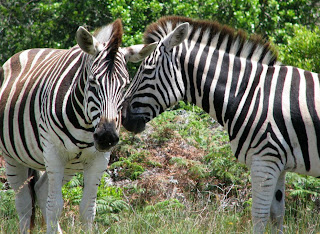Wishing all my "visitors" happiness and success for the new year!
During the holiday season we spent some time with our daughter and son-in-law, who live and work in Port Elizabeth - and today's photos "stem" from that visit. Since all 4 of us enjoy birding and wildlife, we "couldn't resist" taking a "walk on the wild side".
Did you know that there are about 130 species of dragonflies in South Africa? [Not to be confused with the less robust and less active damselflies].
Did you know that the tusks of a warthog are actually upper canine teeth curled upwards?
In South African terminology, tortoises are land animals; turtles = sea-dwelling; and terrapins = fresh water species.
Did you know that all reptiles are creatures of a very ancient "lineage"? Their "ancestors" roamed earth (and seas) even before dinosaurs "held sway".
Can't this Cape bulbul read?
Did you know that 'bulbul' is an Arabic word? And that it was the "name" for a Persian nightingale?
In SA, bulbuls are less fabulous birds, but some of them do utter melodious and cheerful calls.
Our son-in-law suggested that we go on a night-game drive. Unfortunately (and probably because of windy conditions that night) we didn't encounter many night-active animals. But this pair of male lions certainly was a "treat".
King of the jungle? This generally greedy and lazy cat?
Do these 2 Burchell's zebra "share a secret"? It certainly looks as if the one is whispering into the other's ear!?
Zebra are unique to Africa but probably counts as one of the most photographed of wild animals.
Did you know that a zebra's stripes are as unique as a human's fingerprint?
I photographed this pair at BayWorld (Oceanarium) in PE. Previously known as the Jackass penguin (because of its donkey-like braying, which it exhibits on its breeding grounds), this is the only penguin species resident on the African continent.
Friday, January 9, 2009
Festive Cheer
Subscribe to:
Post Comments (Atom)




No comments:
Post a Comment